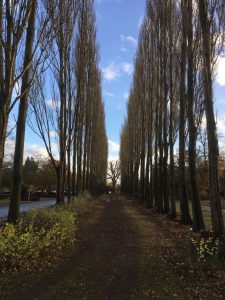Is Your Garden Healthy?
If you’re not a skilled arborist or gardener, it can be difficult to know whether your plants and trees are as healthy as they should be. Keep reading for tips and tricks on how to determine the health of your garden!
Tips and Tricks for Trees

text
Annual Growth
A good way of tracking your trees health is by comparing its annual growth year by year. Is your tree growing enough, or has it’s growth been stunted? Are there any external environmental reasons for this stunt in growth, if not, you may need to contact an arborist.
Branch Health
Upon inspection, are there any broken or damaged branches? Cracks within the tree’s over all structure are signs of a damaged tree. These broken limbs must be pruned as they are a prime way for insects to make their way into the tree, which will result in an infestation and an unhealthy tree.
Evaluate the Trunk
The bark of most trees should not be loose or pealing, with exceptions being birches, maples or eucalyptus. This section is similar to the above as there should be no cracks or holes in the trees structure. This is because holes and cracks allow for insects to make their homes within the tree resulting in a weakened structure.
How are the Leaves?
Evaluating the leaves on your tree is another good way of checking the health of the tree. Much like the leaves of plants, during photosynthesis the leaves trap the sun’s energy which results in a healthy green leaf. Also, be sure to check whether there are any holes or tears in the leaves. This could be a sign of insect infestation or poor leaf health.

If your tree’s are looking good and you’re wondering about the health of your plants, keep reading!
Tips and Tricks for Flowers and Plants
How does your soil look – is it damp enough and well kept?
Your soil should be dark in colour and quite loose. If you pull up your plant the soil should gently fall away and the roots should be spread out. Loose non-compacted soil allows for water and nutrients to easily flow through and reach the roots
Inspect the plants potting
Your plants potting should not be too compact nor too loose, you want it to be right in between. Another thing to watch for when it comes to potting is the size of the pot. If you fear the plant pot is too small, turn it over and check whether it’s roots are trying to escape. You don’t want the pot to be too big either, because if the roots aren’t large enough to absorb all of the water, the soil will stay too moist and could disease.
Are the leaves green? Are they drooping?
Plants leaves become green as the chlorophyll traps the sun’s energy. If your plants leaves are off greenor slightly yellow in color, that means it’s most likely not getting enough sun. While plants leaves will vary from plant to plant, they should all be a relatively green colour. Droopy leaves could be a sign of stress. Stress in plants can be caused by many things including, lack of water, insect infestation and/or a lack of nutrients.
Hopefully, the tips and tricks talked about above will help you efficiently monitor and evaluate your garden. However, if you are still unsure whether your garden needs more attention, call an arborist. Arborists are highly trained tree technicians who specialise in the evaluation, trimming, and removal of trees.
If you have any further questions regarding your tree’s health, why not give us a call? We give free quotes with no obligation.
